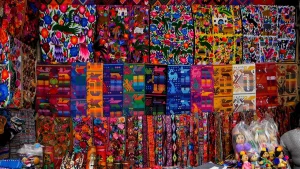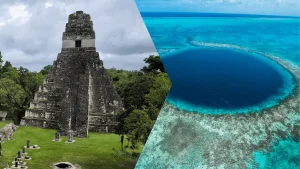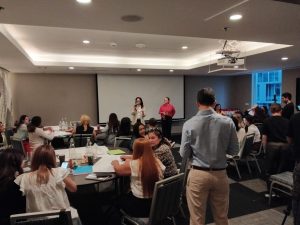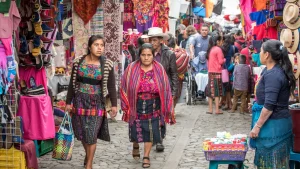A display of color is one of the first things that will catch your attention when you visit Guatemala. Vibrant handwoven masterpieces that tell the tale of a living culture may be found everywhere, from busy marketplaces to serene mountain communities.
Weaving textiles has been a vital aspect of Mayan culture for generations. Every Guatemalan town has its own distinctive weaving methods, colors, and designs that have been handed down through the generations of women. The artwork tells a tale and is more than just ornamental. Each thread, color, and symbol stands for something significant, such as the sun, animals, mountains, or aspects of Mayan cosmology.
In Guatemala, the traditional “huipil,” a shirt with exquisite embroidery, is one of the most identifiable outfits. The huipil, which is worn by women in places like Santiago Atitlan, San Antonio Aguas Calientes, and Chichicastenango, provides insight into a person’s identity, origin, and beliefs. Every textile art creation is a cultural signature because each hamlet has its own unique style.
These textiles are made in a slow, very handcrafted manner. The majority are woven by hand using a backstrap loom, an antiquated tool that fastens around the weaver’s waist and attaches to a stationary point, giving her control over the thread tension. Natural pigments from flowers, plants, and even insects are used to dye cotton and wool, creating gorgeous reds, purples, and blues that hardly ever fade.
There is a unique chance to witness this procedure firsthand by going to a nearby weaving cooperative. In order to ensure fair trade and assist local women, you may observe the sophisticated process in action, try weaving a few rows yourself, and buy directly from the craftspeople.
When exploring the vibrant Guatemalan weaving culture, several locations stand out. The market in Chichicastenango is a sensory extravaganza. Santo Tomás Church features handicrafts, fabrics, and masks in addition to historic Mayan ceremonies. The ideal location to learn about sustainable weaving is San Juan La Laguna (Lake Atitlan), which is well-known for its eco-friendly natural dyes and women’s cooperatives. The village of San Antonio Aguas Calientes, located outside of Antigua, Guatemala, is well-known for its intricate double-sided weaving method. Remote and genuine, Nebaj and the Ixil Triangle are highland settlements that have preserved historic designs that tell their predecessors’ stories.
Purchasing a textile in Guatemala is a way to bring home a piece of history rather than just a memento. Every item, whether it’s a huipil, table runner, or scarf, is painstakingly and lovingly created. As sentimental mementos of their trip, many tourists decide to frame their purchases or use them as accent pieces in their homes.
Look for artisan workshops and fair-trade cooperatives when you’re buying to aid the weavers and maintain their traditions.
Guatemalan textiles are now being used in international art shows, contemporary fashion, and interior design. In order to ensure that this age-old skill keeps developing without losing its foundation, younger generations are fusing traditional patterns with modern trends.
In addition to bringing home a lovely cloth, you may contribute to the continuation of a timeless heritage by traveling to nearby weaving towns and purchasing directly from craftspeople.
Experience Guatemala’s Living Colors
Discover the artistry, culture, and soul behind every thread.
Contact Guatemala Journeys







